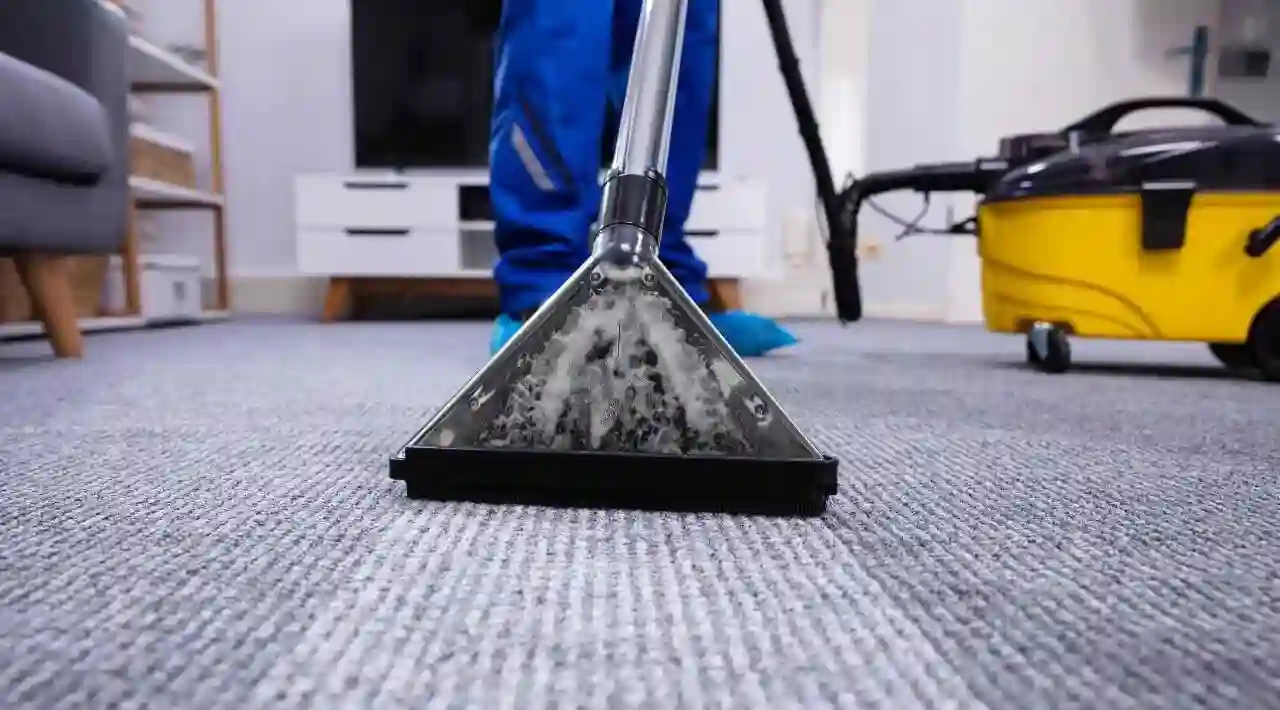
Hello, dear readers! If you or someone in your household suffers from allergies, you’re likely no stranger to the sneezing, itching, and congestion that can come with them. While there are various ways to manage allergies, one often-overlooked aspect is the role of carpets in indoor air quality. In this article, we’ll explore how carpet cleaning can significantly impact allergies and improve the air you breathe inside your home.
The Allergy-Carpet Connection
Before we dive into the world of carpet cleaning, it’s crucial to understand the connection between carpets and allergies. Carpets act like giant filters, trapping airborne allergens and particles such as dust mites, pet dander, pollen, mold spores, and even bacteria. Over time, these allergens accumulate in the carpet fibers, and every step you take can stir them up into the air you breathe.
For allergy sufferers, this can mean constant exposure to allergens, leading to symptoms like sneezing, runny noses, itchy eyes, and even more severe respiratory issues. That’s where proper carpet cleaning comes to the rescue.
The Benefits of Carpet Cleaning for Allergies
Carpet cleaning isn’t just about aesthetics; it’s about creating a healthier living environment, especially for those with allergies. Here are the significant benefits:
- Allergen Removal: Regular carpet cleaning effectively removes allergens trapped in the carpet fibers, reducing the allergen load in your home. This can lead to a noticeable reduction in allergy symptoms.
- Dust Mite Control: Dust mites thrive in carpets, and their waste products are a common allergen trigger. Professional cleaning can significantly reduce dust mite populations.
- Mold Prevention: Carpets can trap moisture and become a breeding ground for mold and mildew. Proper cleaning and drying prevent mold growth, a potent allergen source.
- Improved Indoor Air Quality: By reducing allergens and pollutants in your carpet, you’re also improving the overall air quality in your home, making it easier to breathe.
- Longer Carpet Life: Regular cleaning can extend the life of your carpet by preventing dirt buildup and wear and tear, saving you money in the long run.
Effective Carpet Cleaning Methods
Now that we understand the importance of carpet cleaning for allergies, let’s explore the most effective methods:
- Hot Water Extraction (Steam Cleaning): This method is often recommended by experts and carpet manufacturers. It involves injecting hot water and a cleaning solution into the carpet, agitating it, and then extracting the mixture along with dirt and allergens using a powerful vacuum. Steam cleaning provides a deep and thorough clean, making it highly effective for allergen removal.
- Low Moisture Cleaning (Dry Cleaning): Low moisture cleaning methods, such as encapsulation, use minimal water and are a good option for routine maintenance. These methods can help prevent over-wetting and mold growth while still effectively removing allergens from the surface.
- Regular Vacuuming: Vacuuming your carpet regularly with a high-efficiency particulate air (HEPA) filter vacuum cleaner is a crucial step in allergen control. It helps remove surface allergens before they become deeply embedded in the carpet fibers.
- Professional Cleaning: While vacuuming and low moisture cleaning can be part of your regular maintenance routine, it’s advisable to schedule professional carpet cleaning at least once a year or more frequently for households with severe allergies.
Tips for Effective Carpet Cleaning
To ensure you get the most out of your carpet cleaning efforts, consider these tips:
- Choose a Professional: When opting for professional cleaning, select a reputable company with experience in allergen removal and proper equipment.
- Use HEPA Filters: Whether you’re vacuuming or using a carpet cleaner, make sure the equipment has a HEPA filter to trap even the tiniest allergen particles.
- Ventilate: After cleaning, ensure good airflow in the room to help your carpet dry faster and prevent mold growth.
- Use Allergy-Friendly Products: If you’re cleaning your carpets yourself, choose cleaning products labeled as allergy-friendly or hypoallergenic.
- Regular Maintenance: Vacuum high-traffic areas and spot-clean spills promptly to prevent stains and allergen buildup.
- Consider Allergy-Resistant Carpets: If you’re installing new carpets, consider allergy-resistant options designed to minimize allergen retention.
Conclusion
In conclusion, carpet cleaning plays a significant role in improving indoor air quality and alleviating allergy symptoms. By removing allergens, dust mites, and other pollutants from your carpets, you’re creating a healthier living environment for you and your family.
Whether you choose professional hot water extraction or opt for regular vacuuming and low moisture cleaning, the key is consistency. Regular maintenance and periodic deep cleaning are essential steps in the battle against allergens in your home.
So, if you’re looking for a way to breathe easier and enjoy a more comfortable and allergy-friendly living space, don’t underestimate the power of clean carpets. Your health and well-being will thank you for it!
Related posts:


Forex & Crypto
5 Best Ways to Earn Crypto While You Sleep in 2025
Categories
- Apps (1)
- Automotive (23)
- Beauty (7)
- Business (122)
- Celebrities (2)
- Digital Marketing (21)
- Ecommerce (2)
- Education (22)
- Entertainment (39)
- Events (6)
- Fashion (1)
- Features (4)
- Finance (1)
- Fitness (10)
- Food (2)
- Forex & Crypto (23)
- General (116)
- Health (48)
- House (61)
- Lifestyle (57)
- Marketing (8)
- Parenting (3)
- Pets (10)
- Real Estate (8)
- Safety and Security (14)
- Social Media (31)
- Sports (142)
- Technology (73)
- Travel (23)






















